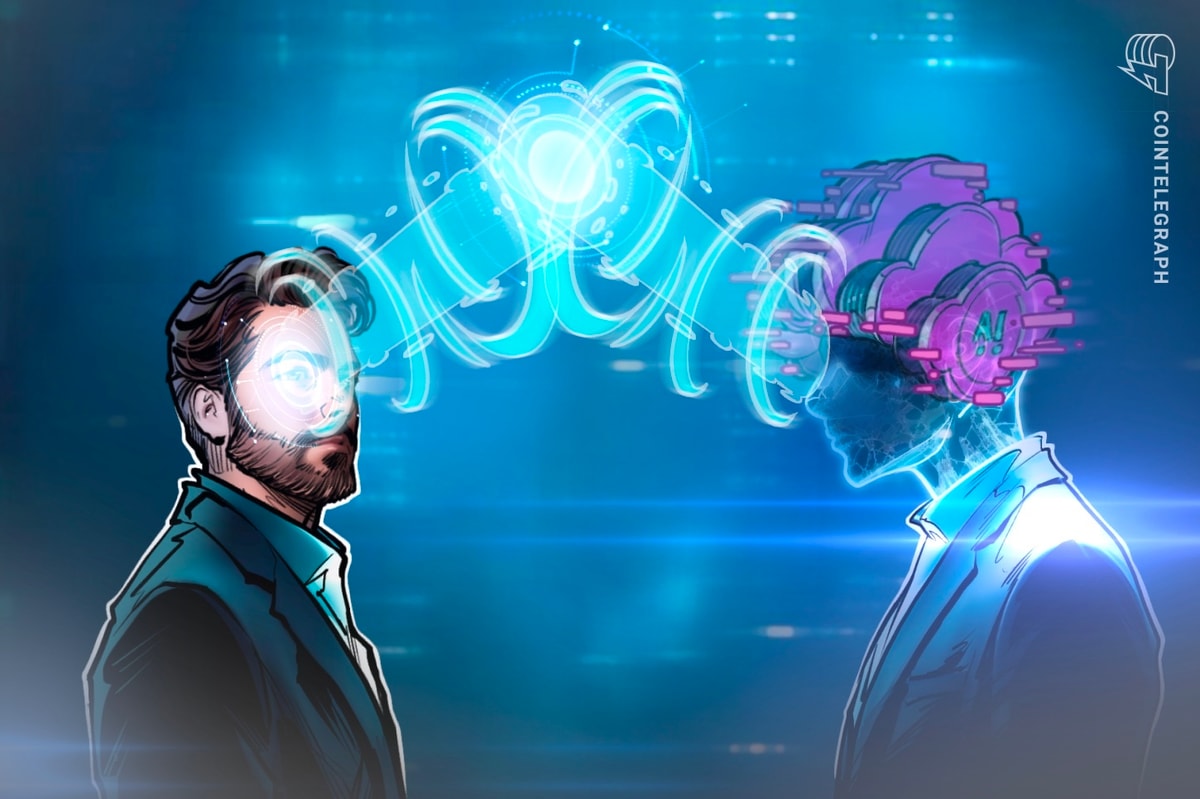
In brief
- NFT artwork platform Gallery of Digital Assets (GODA) held an auction for NFTs from Hilma af Klint this week.
- Family members of the late artist complained about the NFT auction, but the official Foundation is involved in the project.
Co-founded by musician Pharrell Williams earlier this year, the Gallery of Digital Assets (GODA) provides a platform for traditional artists to enter the NFT space, and has delivered drops from Nina Chanel Abney and Todd James.
But its latest NFT launch was mired in controversy after some of the late artist’s descendants complained.
GODA launched an auction on Monday for tokenized digital recreations of influential Swedish abstract artist Hilma af Klint’s artwork. The “Paintings for the Temple” Ethereum NFTs were created by GODA in partnership with Stolpe Publishing, digital art platform Acute Art, and The Hilma af Klint Foundation.
Ultimately, two identical sets of 193 digital NFT recreations of af Klint’s artwork were minted, with one “non-commercial” set donated to the Foundation. From the other set, 163 NFTs were put up for auction this week, with another 30 pieces kept by the GODA team. The NFTs were launched in tandem with the late artist’s official catalogue raisonné, or a comprehensive collection of her work.
But while the official Foundation was onboard with the GODA auction, members of the late artist’s family (Hilma af Klint died in 1944) have spoken up in opposition of the NFT launch.
In an interview with art publication Hyperallergic this week, af Klint’s grandnephew Johan af Klint and Hedvig Ersman—granddaughter of Erik af Klint, Hilma af Klint’s nephew—disputed the creation of the NFTs, claiming that they went against the artist’s wishes. Ersman had tweeted criticism of the NFT sale earlier this month.
2. It is not even the Hilma af Klint Foundation selling the paintings, but Acute Art / Stolpe Förlag through GODA.
The paintings belong to the Hilma af Klint Foundation. The ethical rights to the paintings also belong to the Hilma af Klint Foundation. Read copyright law.— Hilma af Klint (@hilma_af_klint) November 8, 2022
“She saw these paintings as all part of one project. They were meant to be kept together,” Ersman told the publication. “They’re not meant for a person to have hanging on their wall in the living room. Now, with the NFT, they’re commercializing it, using Hilma af Klint’s name and reputation to subvert her message.”
An NFT is a blockchain token that represents ownership in an item—in this case, a digital recreation of the original physical artwork. NFTs are also used for things like profile pictures, collectibles, and video game items, as well as physical goods and event ticketing.
The artwork itself is in the public domain, and The Hilma af Klint Foundation CEO Jessica Höglund told Hyperallergic that it wasn’t “in [a] position to either permit or oppose” such reproductions. However, she said that the Foundation does have a partnership in place with Stolpe for the catalogue raisonné, and that deal includes NFTs.
On Thursday, just before the auction concluded, GODA tweeted a statement noting that it “[affirmed] that all necessary contracts and agreements are in place to validate the project’s authenticity” via the Foundation. GODA shared a new statement with Decrypt regarding the situation, claiming that family members had “falsely” tried to represent the Foundation.
“GODA was not made aware of any unhappy family [members] before they began to falsely represent the Foundation on Twitter,” the statement reads. “This was the first time we were aware of any concerns. We did a deal with Acute Art and Stolpe Publishing who brought this opportunity to us, as we are the most legitimate and credible art platform in the digital space.”
“Between our parties, we have a very sound legal agreement directly with the Foundation. From our understanding, this is a distant relative that has no involvement with the Foundation whatsoever,” the statement continues. “The Foundation has also made an official announcement clearing this up and detailing why the catalogue raisonné, and by extension the NFT project, is important for Hilma’s work.”
GODA’s auction concluded as planned yesterday, with 163 pieces ultimately selling for 1.5 ETH each, or just over $1,800 apiece. The auction format ranked bidders by how much they were willing to pay, but set the final price based on what the 163rd highest bidder offered.
In other words, the top 163 bidders each paid 1.5 ETH in the end, and buyers received a discount for any overbid amount. GODA Mint Pass NFT holders also got a refund for a 15% discount on the sale price. The artwork was revealed today, letting buyers see which randomized piece they purchased from the drop.
This isn’t the first instance of a famed artist’s surviving family members complaining about an apparently official NFT drop. Earlier this year, relatives of Pablo Picasso complained when the late artist’s great-grandson Florian Picasso released NFTs inspired by Pablo’s work. The Picasso family resolved the squabble soon after.
Stay on top of crypto news, get daily updates in your inbox.
Read More: decrypt.co








 Bitcoin
Bitcoin  Ethereum
Ethereum  Tether
Tether  XRP
XRP  Solana
Solana  USDC
USDC  Dogecoin
Dogecoin  TRON
TRON  Cardano
Cardano  Lido Staked Ether
Lido Staked Ether  Wrapped Bitcoin
Wrapped Bitcoin  LEO Token
LEO Token  Avalanche
Avalanche  Chainlink
Chainlink  Stellar
Stellar  Sui
Sui  Shiba Inu
Shiba Inu  USDS
USDS  Hedera
Hedera  Toncoin
Toncoin  Wrapped stETH
Wrapped stETH  Bitcoin Cash
Bitcoin Cash  Litecoin
Litecoin  Polkadot
Polkadot  Hyperliquid
Hyperliquid  Binance Bridged USDT (BNB Smart Chain)
Binance Bridged USDT (BNB Smart Chain)  Pi Network
Pi Network  Bitget Token
Bitget Token  Ethena USDe
Ethena USDe  WETH
WETH  WhiteBIT Coin
WhiteBIT Coin  Monero
Monero  Wrapped eETH
Wrapped eETH  Uniswap
Uniswap  OKB
OKB  Dai
Dai  Pepe
Pepe  Coinbase Wrapped BTC
Coinbase Wrapped BTC  Aptos
Aptos  Gate
Gate  Ondo
Ondo  Tokenize Xchange
Tokenize Xchange  NEAR Protocol
NEAR Protocol  sUSDS
sUSDS  BlackRock USD Institutional Digital Liquidity Fund
BlackRock USD Institutional Digital Liquidity Fund  Internet Computer
Internet Computer  Cronos
Cronos  Mantle
Mantle  Ethereum Classic
Ethereum Classic